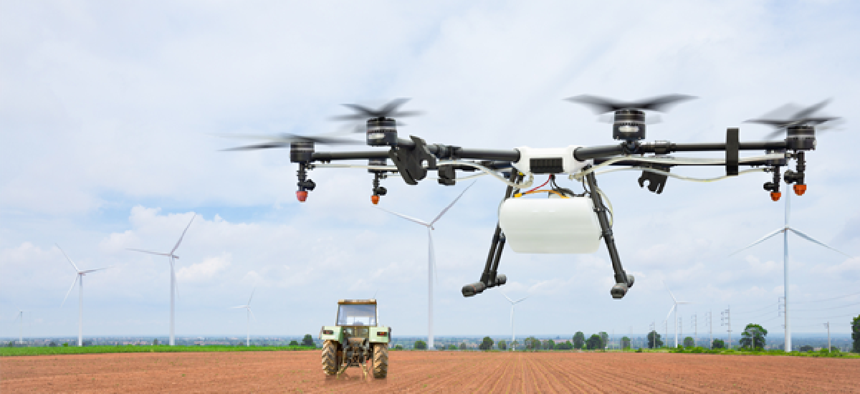How the FAA plans to speed drone integration

The UAS Integration Pilot Program seeks applicants to help it solve the technical, regulatory and policy challenges of integrating drones into the national airspace.
Just days after the White House gave the Federal Aviation Administration three months to launch an UAS Integration Pilot Program to speed up the integration of drones into the national airspace, the agency said the program is ready to go.
The Nov. 2 plan called for the FAA to match state, local and tribal governments with commercial UAS operators or manufacturers. Those teams can then apply to the FAA to set up local test zones and feed their airspace integration data to the agency.
The program is designed to "to solve technical, regulatory, and policy challenges, while enabling advanced UAS operations in select areas subject to ongoing safety oversight and cooperation between the Federal government and applicable State, local, or tribal jurisdictions," according to a Federal Register notice scheduled for publication on Nov. 8. Operators will have latitude to experiment with operational and communications concepts to advance the integration of drones into the existing aviation environment.
The program has four goals:
- Accelerate the safe integration of drones into the national airspace by testing and validating new concepts in a controlled environment, focusing on detect and avoid technologies, command and control links, navigation, weather and human factors.
- Address security and safety concerns associated with UAS operating in close proximity to humans and critical infrastructure by ensuring effective communication between drone operators and government.
- Promote innovation in and development of the U.S. unmanned aviation industry.
- Identify the most effective models of balancing local and national interests in UAS integration.
The FAA has taken considerable flak from drone makers and potential commercial drone operators for its sluggish response to enabling a rapidly growing, and potentially revolutionary, technology. The FAA has been so inundated with applications to operate drones in controlled airspace, it recently filed an emergency request to automate the process to winnow down thousands of backlogged requests.
The oversight will be managed locally, but the FAA will have a role. Data gathered under pilot projects will be used to help develop regulations to govern use cases, such as package delivery, news gathering over populated areas and beyond the line-of-sight operations in remote areas for tasks such as inspecting pipelines or conducting search and rescue operations.
A version of this article was first posted to FCW, a sibling site to GCN.





